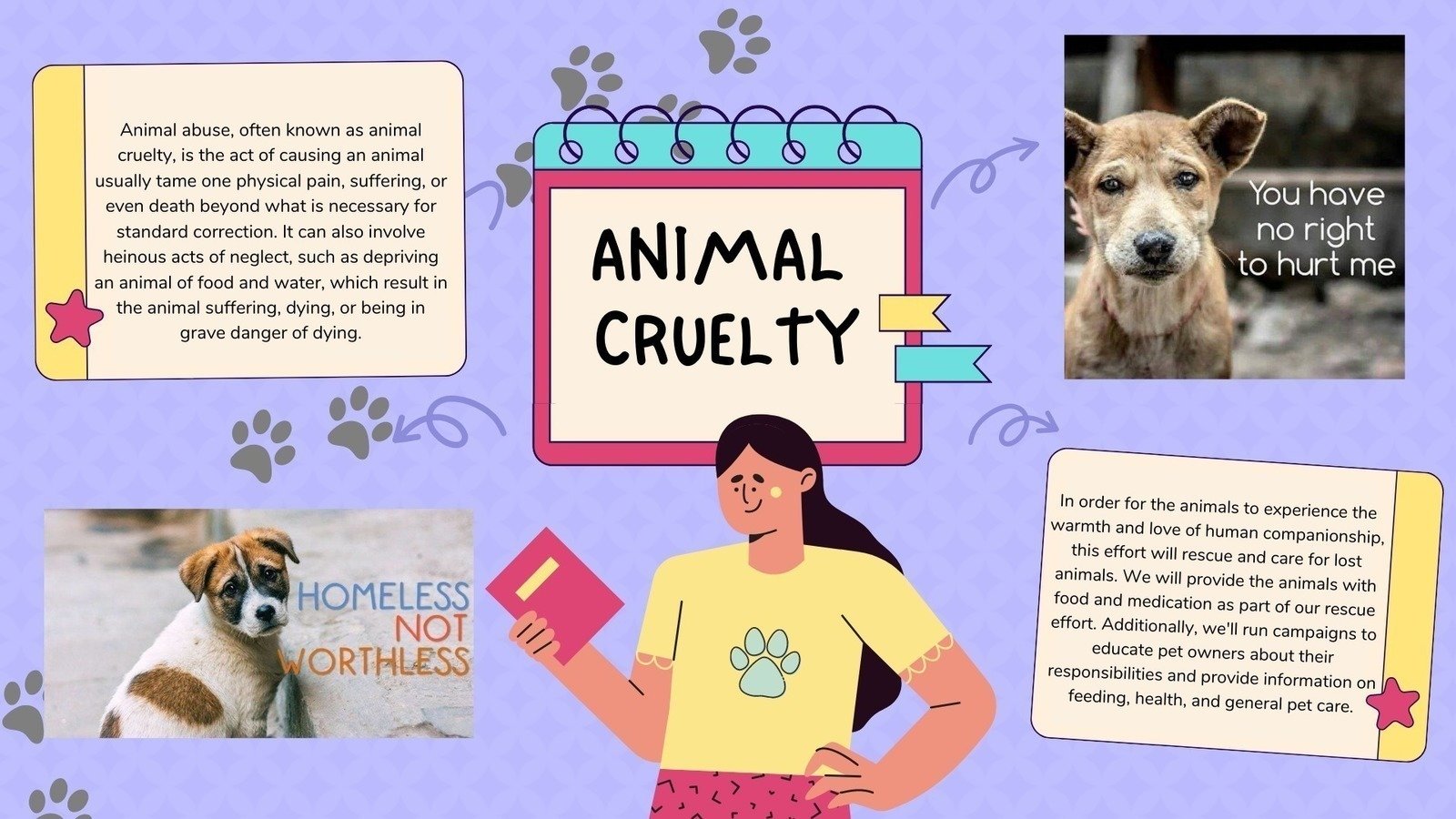Animal abuse is an insidious issue that pervades society, often unnoticed until it manifests in egregious acts that capture public attention. While the cruelty endured by animals can evoke strong emotions, understanding the societal mechanisms at play is pivotal in addressing and preventing such behavior. The question lingers: Who is truly responsible for preventing animal abuse? This inquiry invites a multifaceted investigation that involves not only individuals but also institutions, legislation, and cultural paradigms.
At the forefront of this examination stands individual accountability. Every person holds intrinsic power, influencing the treatment of animals through personal choices and behaviors. The pet owner who neglects their animal or the bystander who witnesses abuse without intervening both contribute to a culture that tacitly permits cruelty. Education plays an essential role in shaping attitudes. A populace that lacks awareness about the ethical treatment of animals may inadvertently perpetuate harmful practices. Early intervention, fostering empathy towards all living creatures through educational programs in schools, can significantly alter this trajectory. Children exposed to humane education are often more likely to grow into adults who respect and advocate for animal welfare.
However, individual responsibility cannot be isolated; systemic structures also wield considerable influence. The role of law enforcement and judicial systems cannot be overstated. In many jurisdictions, animal cruelty laws exist but are rarely enforced with the same vigor as other crimes. The judicial system’s inadequacies in penalizing offenders can create a chilling effect, signaling to potential abusers that their actions may go unpunished. Strengthening these laws and ensuring their rigorous application is a societal obligation. Advocates must not only call for more stringent penalties but also for comprehensive training for law enforcement personnel to recognize and act when faced with animal abuse cases.
A critical player in preventing animal abuse is the government. National and local legislatures are tasked with enacting legislation that protects animals and provides for their welfare. However, the commitment of government entities to animal rights can vary significantly, often depending on public interest and activism. Lobbying for humane laws and regulations is vital. Organizations dedicated to animal welfare can galvanize public support, mobilizing citizens to pressure their representatives to prioritize animal protection. This dynamic interplay between activism and legislation can cultivate environments less tolerant of animal cruelty.
Furthermore, animal shelters and rescue organizations serve as frontline defenders against abuse. These entities not only provide sanctuary for abused animals but also engage in advocacy and education to prevent future cruelty. Their work often reveals systemic issues that necessitate broader societal changes. For instance, the prevalence of puppy mills—a direct consequence of lax breeding regulations—highlights the need for comprehensive reforms in pet breeding practices. By addressing these systemic flaws, shelters and rescues do more than rehabilitate individual animals; they aim to transform the societal landscape that permits abuse to flourish.
In conjunction with these bodies, the media plays an indispensable role in shaping public perception of animal welfare issues. Investigative journalism can bring to light hidden abuses, galvanizing public outrage and demanding action. Conversely, the media also bears responsibility for sensationalizing cruelty without fostering meaningful discourse about prevention. Thoughtful reporting can bridge the gap between awareness and action, informing the public about how they can contribute, whether through volunteering, advocacy, or informed consumer choices.
Compounding these factors is the cultural context surrounding animals. Attitudes towards pets and wildlife vary greatly across different cultures and regions. In some societies, animals are viewed predominantly as property, lacking rights and protections. This entrenched viewpoint stymies efforts to foster humane treatment. Cultural shifts often require sustained public discourse and grassroots movements that challenge long-standing norms. By promoting narratives that elevate the intrinsic value of animals and their rights, societies can begin to foster environments where abuse is not only errantly judged—it’s seen as morally unacceptable.
While corporations also play a significant role in this issue, their focus on profitability often supersedes ethical considerations. Industries that rely on animal labor or use animals for testing frequently resist change due to economic concerns. Consumer pressure can drive corporations to adopt more humane practices. By supporting businesses that prioritize animal welfare, consumers can catalyze a broader ethical shift within industries. Choosing cruelty-free products and supporting humane companies can forge a new path toward compassion.
Ultimately, the responsibility for preventing animal abuse lies within a web of interconnected influences. Individual actions, legislative rigor, the role of shelters, media representation, cultural norms, and corporate ethics all converge to shape the landscape of animal welfare. A collective consciousness is essential, one that acknowledges both the direct responsibility each of us carries and the larger systemic failures that breed cruelty. Change does not elicit overnight success; it is a relentless pursuit that requires collaboration, advocacy, and education across diverse sectors. The compassionate future we envision hinges on our ability to hold ourselves and our institutions accountable. The charge to protect the voiceless is a shared endeavor, and it beckons our active participation.










